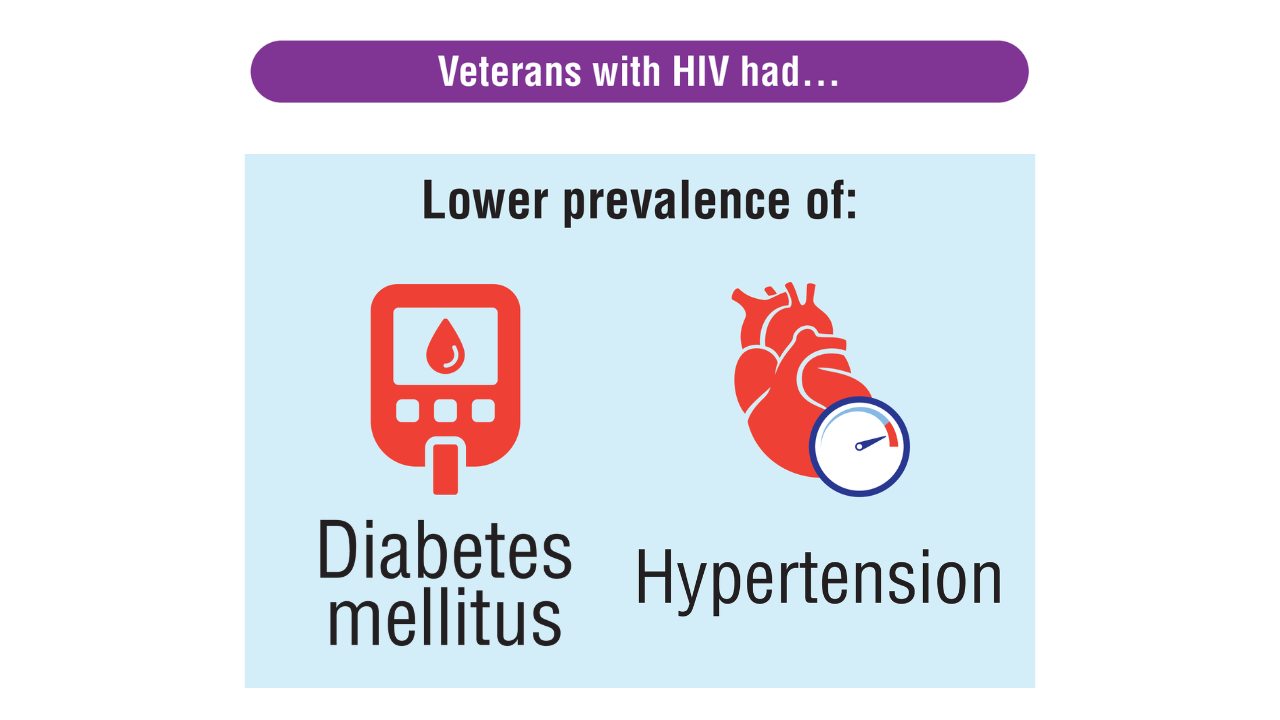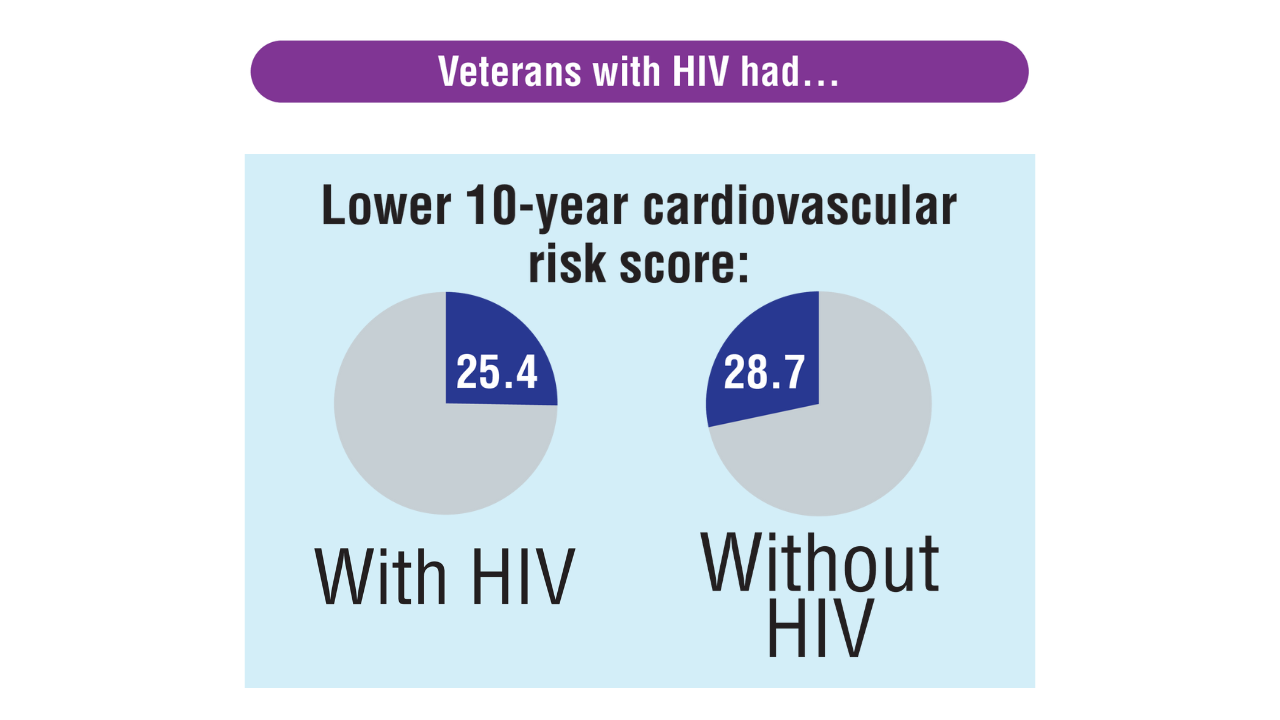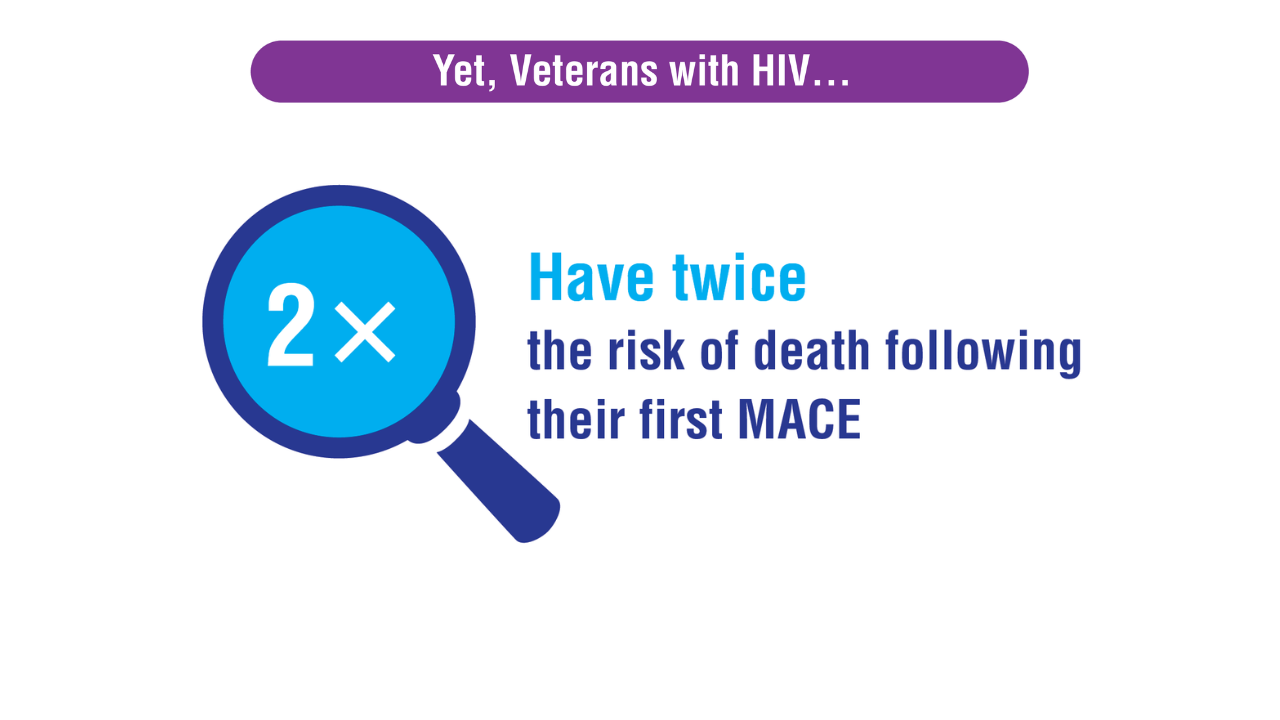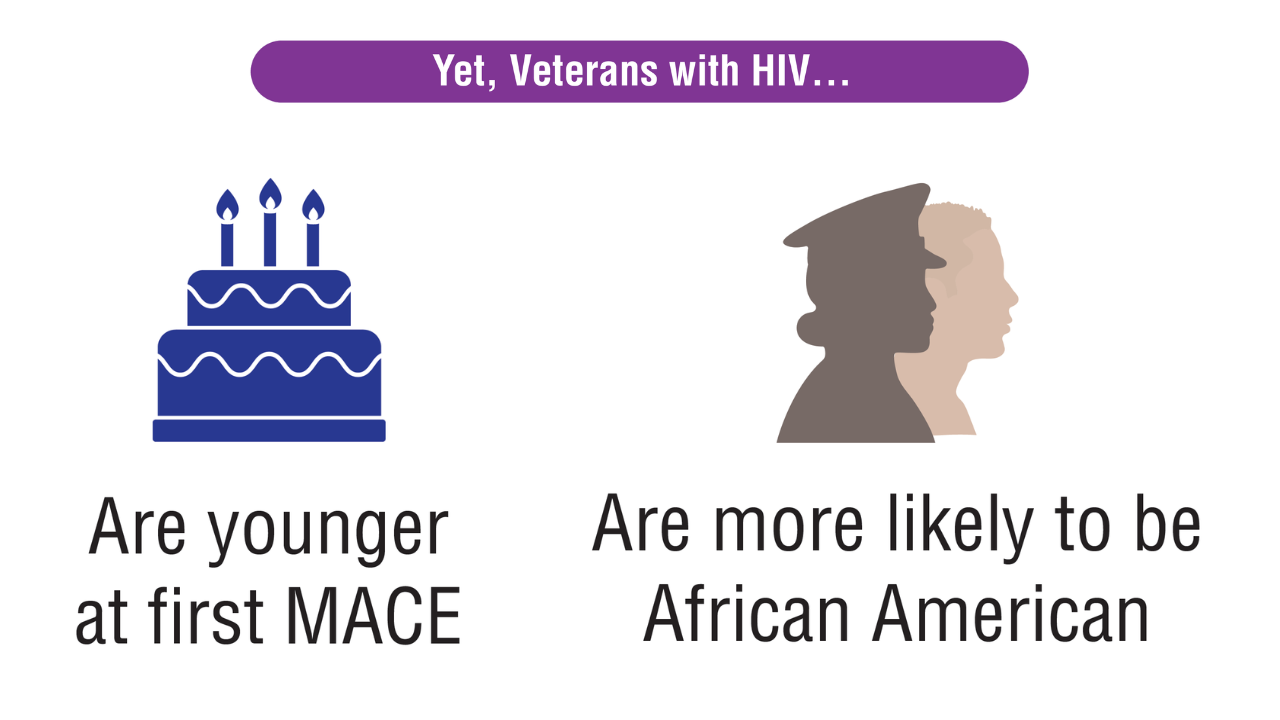Data Trends 2025: HIV





Reviewed by:
Puja Van Epps, MD, Associate Professor, Department of Internal Medicine, Division of Infectious Diseases, Case Western Reserve University School of Medicine, Cleveland, Ohio; Special Assistant to Chief Officer, Specialty Care Program Office, Veterans Health Administration, Washington, DC. Puja Van Epps, MD, has disclosed the following relevant financial relationships: Received research grant from: ViiV Healthcare, ongoing - 2 year Investigator Initiated Study.





The VHA exceeds national benchmarks for human immunodeficiency virus (HIV) viral suppression rates, although suppression rates are lower than the VHA average among younger, female, Latino, and rural veterans.1 Cardiovascular health is an emerging concern for veterans with HIV, who experience higher mortality and severe events like stroke, despite fewer traditional risk factors.2
 Comparing MACE in Veterans With and Without HIV2
Comparing MACE in Veterans With and Without HIV2
Clinical characteristics and mortality outcomes were compared in a cohort of veterans with (n = 2510) and without HIV (n = 277,801), who experienced their first MACE between 2003. Comparing MACE in Veterans With and Without HIV2
Comparing MACE in Veterans With and Without HIV2 Comparing MACE in Veterans With and Without HIV2
Comparing MACE in Veterans With and Without HIV2 Comparing MACE in Veterans With and Without HIV2
Comparing MACE in Veterans With and Without HIV2 Comparing MACE in Veterans With and Without HIV2
Comparing MACE in Veterans With and Without HIV2
Despite having fewer traditional risk factors, veterans with HIV had a significantly higher risk of early and more severe cardiovascular events, particularly stroke and cardiac arrest, and died at higher rates than their counterparts without HIV. Comparing MACE in Veterans With and Without HIV2
Comparing MACE in Veterans With and Without HIV2
Clinical characteristics and mortality outcomes were compared in a cohort of veterans with (n = 2510) and without HIV (n = 277,801), who experienced their first MACE between 2003. Comparing MACE in Veterans With and Without HIV2
Comparing MACE in Veterans With and Without HIV2 Comparing MACE in Veterans With and Without HIV2
Comparing MACE in Veterans With and Without HIV2 Comparing MACE in Veterans With and Without HIV2
Comparing MACE in Veterans With and Without HIV2 Comparing MACE in Veterans With and Without HIV2
Comparing MACE in Veterans With and Without HIV2
Despite having fewer traditional risk factors, veterans with HIV had a significantly higher risk of early and more severe cardiovascular events, particularly stroke and cardiac arrest, and died at higher rates than their counterparts without HIV. Comparing MACE in Veterans With and Without HIV2
Comparing MACE in Veterans With and Without HIV2
Clinical characteristics and mortality outcomes were compared in a cohort of veterans with (n = 2510) and without HIV (n = 277,801), who experienced their first MACE between 2003. Comparing MACE in Veterans With and Without HIV2
Comparing MACE in Veterans With and Without HIV2 Comparing MACE in Veterans With and Without HIV2
Comparing MACE in Veterans With and Without HIV2 Comparing MACE in Veterans With and Without HIV2
Comparing MACE in Veterans With and Without HIV2 Comparing MACE in Veterans With and Without HIV2
Comparing MACE in Veterans With and Without HIV2
Despite having fewer traditional risk factors, veterans with HIV had a significantly higher risk of early and more severe cardiovascular events, particularly stroke and cardiac arrest, and died at higher rates than their counterparts without HIV.Item 1 of 5Click here to view more from Federal Health Care Data Trends 2025.
,false×ADVERTISEMENTADVERTISEMENTADVERTISEMENT
